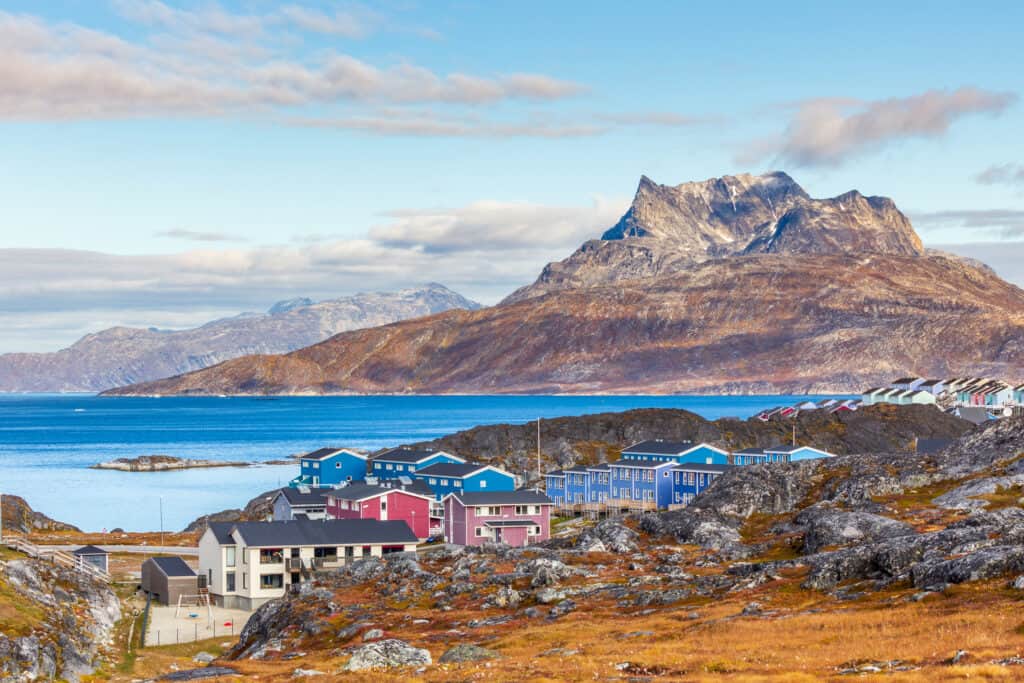Many assume Greenland is filled with green land while Iceland is covered in ice. However, the opposite is actually true. You might be wondering, then, how Greenland got its name, if not from its terrain.
Country names usually indicate a specific quality about the region or hint at its history. For example, many country names are derived from the language of their settlers. According to history, Greenland’s name came from Scandinavian settlers — specifically from a Scandinavian explorer called Erik the Red. The name was meant to attract more settlers to the region.
Greenland is the island territory of Denmark located within North America but is geopolitically part of Europe. It’s nestled between the Arctic and Atlantic oceans and is the world’s largest island. Interested in learning more about the country, how it was established, and how it got its name? Here’s an overview of Greenland’s history and a list of wildlife inhabiting the country.
How Did Greenland Get Its Name?
Greenland got its name from explorer Erik Thorvaldsson in the 10th century, also called Erik the Red, who was exiled to the island from Iceland for murder. It’s said that Thorvaldsson named the country “Greenland” to attract more settlers to the area since lush greenery is an appealing terrain. While most of the country is covered in a gradually sloping icecap, scientists believe it did feature more greenery and vegetation 2.5 million years ago. Greenland is considered the anglicized version of Grœnland, which is how the name is spelled in Old Norse, and Grønland, the Danish and Norwegian version.
In Greenlandic, the country’s official language, Greenland is often called “Inuit Nunaat,” meaning “Land of the People,” or “Kalaallit Nunaat,” meaning “Land of the Greenlanders.”

Greenland is the largest island in the world that is not its own continent.
©iStock.com/Vadim_Nefedov
Brief History of Greenland
The Inuit were the first inhabitants of Greenland, and the Saqqaq people lived there between 2,500 BC to about 900 BC. The Vikings didn’t arrive until the late 10th century with Thorvaldsson when he led a fleet of 25 ships. However, only 14 of them actually made it to the country. Thorvaldsson then named the land, and Greenland eventually became part of Norway, then part of Denmark, along with Norway.

Greenland contains the world’s largest ice sheets.
©posteriori/Shutterstock.com
According to historians, many groups of migrants died out or disappeared throughout the island’s history. In the 13th century, however, the Inuit migrated from Asia and survived to this day, making 88% of Greenland’s population Inuit or a mix an Intuit-Danish mix. The rest of its citizens are European (but mostly Danish).
Greenland has a population of 56,653 people, making it the lowest population-dense country in the world. Almost one-quarter of the island’s population lives in Nuuk, the country’s capital, which bursts eclectic and exciting attractions like museums, boutiques, and cafes. Locals (and visitors) often enjoy the island’s unique “Midnight Sun” phenomenon, during which the sun does not set between May 25th and July 25th. In other words, Greenland experiences permanent daylight lasting for two months, with the sun remaining visible throughout the entire day and night (hence the name “midnight sun”).
Many people call Greendlanders “Eskimos,” but the proper name for them is Inuit or Kalaallit. The Inuit people share similarities with those Intuit in Canada and Alaska.
Wildlife in Greenland
Many believe Greenland couldn’t possibly boast of thriving wildlife with its mostly-icy terrain. However, we currently track 158 animals in Greenland (adding more each day). Most of these animals are marine mammals and avian species, but there are some terrestrial ones as well.

The glaucous gull is one of the many well-known birds of Greenland.
©xpixel/Shutterstock.com
A few of the most memorable animals in Greenland include polar bears, reindeer, muskox, Arctic foxes, Arctic wolves, collared lemmings, Greenlandic sled dogs, whales, walruses, seals, porpoises, eagles, and sparrows.
Fishing is extremely common in Greenland as well, and the most commonly caught fish include shrimp, cod, halibut, and salmon. In fact, Greenland’s marine life is an important resource to the country. Greenland exports a ton of seafood to other countries.
In addition to fishing, many locals will also hunt for food such as reindeer, muskox, and lamb, all of which are key ingredients in Greenlandic gastronomy.
Your best chance at spotting wildlife in Greenland is by visiting the Northeast Greenland National Park, which is 375,000 square miles and is the world’s largest national park. The park is situated in the northeast corner of the country, where wildlife thrives undisturbed. Common wildlife attractions also include whale watching, bird watching, or angling.
The most dangerous animal in Greenland is the polar bear, which has a history of being deadly when confronted. Additionally, watch out for foxes and walruses.
In terms of endangered species, Greenland has a few:
- Hooded seal: Vulnerable
- Reindeer: Vulnerable
- North Atlantic right whale: Critically Endangered
- Blue whale: Endangered
- Fin whale: Vulnerable
- Sperm whale: Vulnerable
The photo featured at the top of this post is © iStock.com/KimKimsenphot
Thank you for reading! Have some feedback for us? Contact the AZ Animals editorial team.






